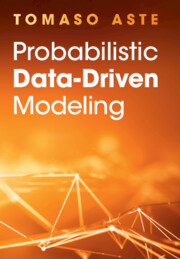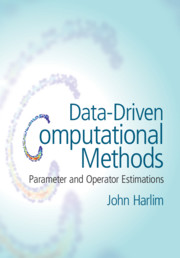Probabilistic Data-Driven Modeling
This book introduces relevant and established data-driven modeling tools currently in use or in development, which will help readers master the art and science of constructing models from data and dive into different application areas. It presents statistical tools useful to individuate regularities, discover patterns and laws in complex datasets, and demonstrates how to apply them to devise models that help to understand these systems and predict their behaviors. By focusing on the estimation of multivariate probabilities, the book shows that the entire domain, from linear regressions to deep learning neural networks, can be formulated in probabilistic terms. This book provides the right balance between accessibility and mathematical rigor for applied data science or operations research students, graduate students in CSE, and machine learning and uncertainty quantification researchers who use statistics in their field. Background in probability theory and undergraduate mathematics is assumed.
- Supports learning with theoretical exercises, tutorials, and a set of codes and tools on the book's GitHub
- Acts as a useful reference for readers by focusing on concepts, covering a large range of topics, and presenting all the important ideas
- Bridges the gap between practical handbooks that skip the mathematical underpinnings and the more theoretical treatments only accessible to experts, thus providing the right balance between accessibility and mathematical rigor
- Develops tools from the ground up
Reviews & endorsements
'I really enjoyed reading this book. It offers an expansive tour to the realm of probabilistic data-driven systems modeling, as well as an easily accessible reference for those, such as students, researchers and practitioners, aiming to understand the nature and behaviors of complex systems, as often encountered in the real world.' Jiming Liu, Hong Kong Baptist University
'This is a much-needed book that comprehensively reviews data analysis concepts and methods for complex systems.It starts with probability and statistics and clearly and succinctly connects it to information theory and network analysis. I look forward to having it on my shelf, and I will recommend it to all my students!' J. Doyne Farmer, University of Oxford
Product details
May 2025Hardback
9781009221856
420 pages
253 × 177 mm
Not yet published - available from May 2025
Table of Contents
- List of symbols
- Preface
- Part I. Preliminary:
- 1. Introduction
- 2. Fundamentals of Probability
- 3. Fundamentals of machine learning
- 4. Fundamentals of networks
- Part II. Foundations of Probabilistic Modeling:
- 5. Univariate probabilities
- 6. Multivariate probabilities
- 7. Entropies
- 8. Dependence
- 9. Stochastic processes and scaling laws
- 10. Causation
- 11. Networks as representations of complex systems
- 12. Probabilistic modeling with network representations
- Part III. Model Construction from Data:
- 13. Nonparametric estimation of univariate probabilities from data
- 14. Parametric estimation of univariate probabilities from data
- 15. Estimation of multivariate probabilities from data
- 16. Time series and probabilistic modeling
- 17. Construction of network representations from data
- 18. Assessing the goodness of models
- Part IV. Closing:
- 19. Conclusions
- Part V. Appendices: Appendix A. Essentials on probability theory
- Appendix B. Finding roots of non-linear equations
- Appendix C. Some optimization problems and methods
- Appendix D. Principal components analysis
- Appendix E. Random forest
- Appendix F. Expectation maximization (EM)
- Appendix G. Bad modeling
- References
- Index.








